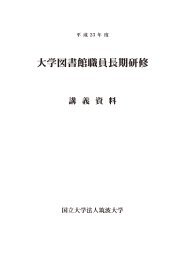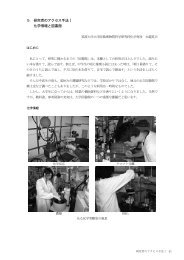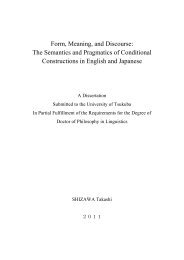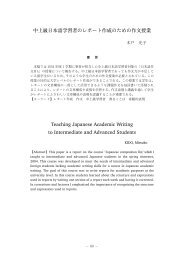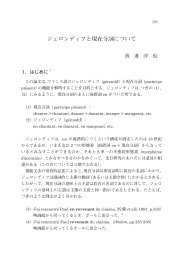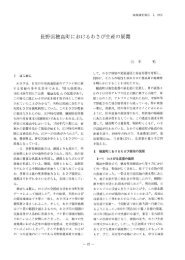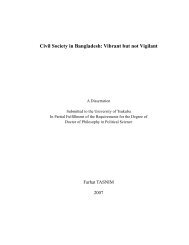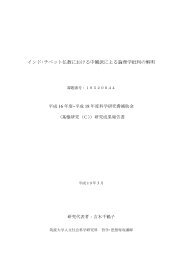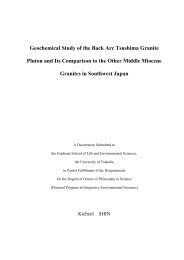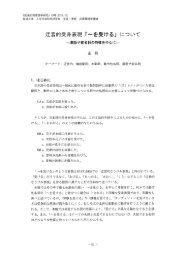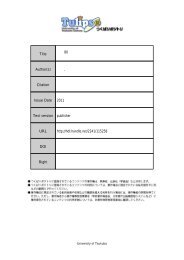TQM Model of Elements-Deployment Table Developed from Quality ...
TQM Model of Elements-Deployment Table Developed from Quality ...
TQM Model of Elements-Deployment Table Developed from Quality ...
Create successful ePaper yourself
Turn your PDF publications into a flip-book with our unique Google optimized e-Paper software.
The <strong>Quality</strong> Award is a greatly more wide-ranging management system than ISO<br />
9000 if it sees <strong>from</strong> the factor structure analysis clarified in Chapter 5. It can be said<br />
that the target that should be achieved is the same and it is in the relation <strong>of</strong> the inside<br />
and outside (both side) means as Iizuka [6] advocates it, because ISO 9000 is a quality<br />
system demand under the buyer's standpoint, and <strong>TQM</strong> aims at the establishment <strong>of</strong><br />
the quality system for attainment <strong>of</strong> Customer Satisfaction: CS and Customer Delight:<br />
CD under the producer, on the other hand. Moreover, ISO 14000 is thought to be a<br />
requirement <strong>of</strong> management system eatablishment based on the environmental quality,<br />
and there is a lot <strong>of</strong> point to supplement the former standard. Therefore, it is no wonder<br />
to present various papers for studying on integration <strong>of</strong> the both standards not only in<br />
Japan but also in main each country like the paper <strong>of</strong> the ASQ Annual Conference etc.<br />
Fig. 7.3 is the one paper presented at the EOQ Annual Congress that is explaining for<br />
ISO 9000 is assumed to be one - step <strong>of</strong> the <strong>TQM</strong> achievement and the level <strong>of</strong> <strong>TQM</strong> is<br />
put at the EQA level (Gisella Connca [7]).<br />
That is,<br />
Stage 1. Operational <strong>Quality</strong>: "Product <strong>Quality</strong>" and "<strong>Quality</strong> <strong>of</strong> Production Process".<br />
Stage 2. Formalized <strong>Quality</strong>: “Acquisition <strong>of</strong> ISO 9000” and “Formalized <strong>Quality</strong><br />
System”.<br />
Stage 3. Strategic <strong>Quality</strong> Management: In the developmental stage three phases are<br />
recognizable: the control and management <strong>of</strong> the process quality; strategic<br />
benchmarking and quality awards, and diagnostic self-assessment,<br />
particularly stimulated by the spread <strong>of</strong> quality awards.<br />
In general, the standard is specified for minimum requirement to be achieved that<br />
it must not be satisfied with the level <strong>of</strong> ISO 9000, as for the enterprise concern. Under<br />
such circumstances, <strong>TQM</strong> is, needless to say, to accomplish further higher level <strong>of</strong><br />
quality system, and physically have been advanced as such to date. Therefor, <strong>Quality</strong><br />
Award must be contributing for Customer Satisfaction by more aggressive quality<br />
system improvement.<br />
Eventually, it is necessary to locate the relation between both <strong>from</strong> such a viewpoint.<br />
As for such concern, it is found among ISO 14000 related papers like as integration with<br />
<strong>TQM</strong> (Yoshizawa, Koura [8], Koura [9], and Syukuya, Ito, Tanaka, Kato, Koura [10]),<br />
and it is considered about the improvement and the revolution <strong>of</strong> the business<br />
management on quality strategy to achieve the National <strong>Quality</strong> Award after the<br />
certification <strong>of</strong> two standards in the future.<br />
207



